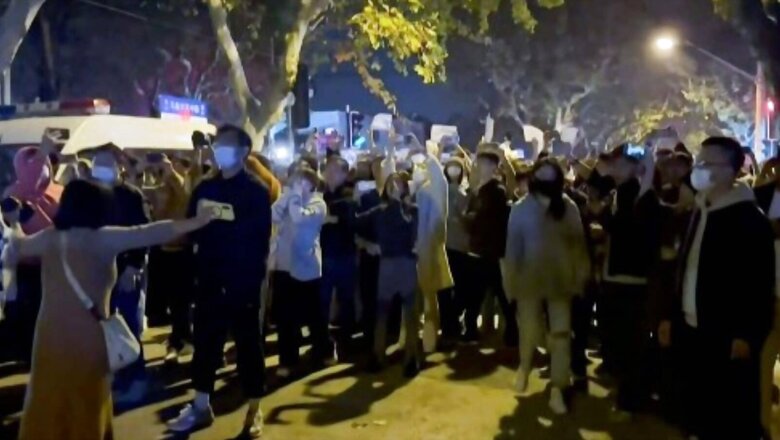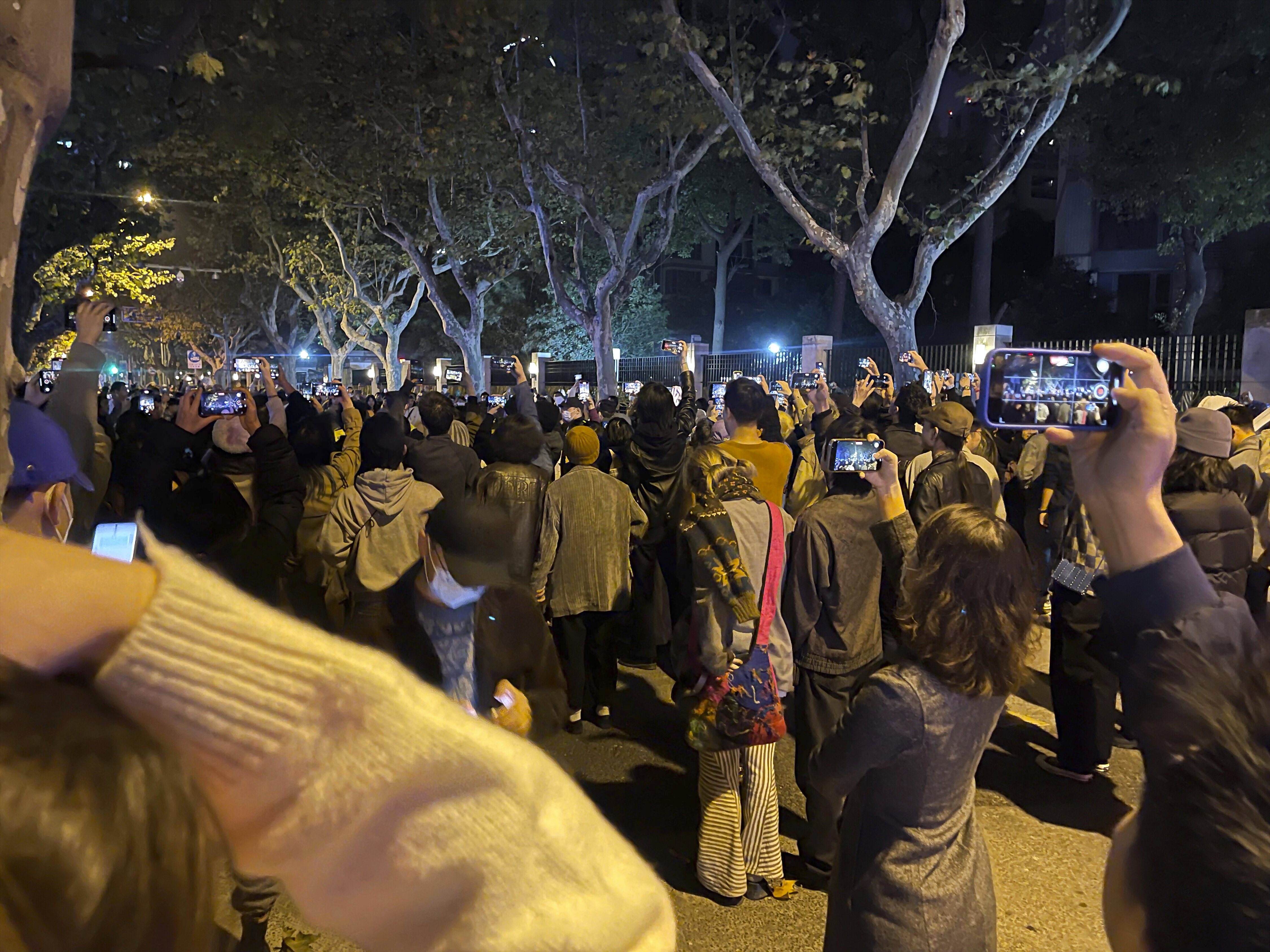
views
Throughout its modern conception, China has seen a number of major – and minor – protests against a wide variety of issues. While the Tiananmen square massacre has been a historical focal point amid all other demonstrations, the demonstrations have not been the only one that Beijing has suppressed.
With a new wave of angry protests – aimed against Xi Jinping and his Zero Covid policy (which protesters believe led to the death of innocents in a recent fire) – blanket China, it remains to be seen whether China will execute its usual style of suppression against these.

The May Fourth Movement, the February 28 incident against Kuomintang (KMT) rule on Taiwan, the 1959 Tibetan uprising against Chinese Communist Party (CCP) rule, the 1989 Tiananmen Square protests, which were put down with brutal military force, and the 25 April 1999 demonstration by 10,000 Falun Gong practitioners at Zhongnanhai were among the most notable protests.
Corruption, forced evictions, unpaid wages, human rights abuses, environmental degradation, ethnic protests, petitioning for religious freedom and civil liberties, protests against one-party rule, and nationalist protests against foreign countries are among the grievances raised by Chinese protesters and dissidents.
China is known for its brutal suppression of protests – including detentions, police action and wide censorship – both online and offline.
Article 13 of the Republic of China Constitution of 1947 states that “the people shall have freedom of assembly and association.” From 1948 to 1991, this practise was restricted due to the use of the Temporary Provisions against the Communist Rebellion, which nullified civil liberties at the time.
According to the People’s Republic of China Constitution, “citizens of the People’s Republic of China enjoy freedom of speech, press, assembly, association, procession, and demonstration.” In practise, however, these rights are rigorously controlled, generally under the guise of preserving “social stability.” While guaranteeing freedoms, the constitution also declares that Chinese citizens must “fight against those forces and elements that are hostile to China’s socialist system and attempt to undermine it.” Poorly defined anti-subversion laws, such as article 105 of the criminal code, may be used to criminally prosecute people who want to exercise their rights to assemble, speak freely, or demonstrate, state reports.
Other citizens who participate in various forms of protest may face administrative punishment, such as forced labour terms.
China implemented a broad new national security law (NSL) for Hong Kong in 2020, making it easier to prosecute protesters and limiting the city’s autonomy.
Hong Kong had always intended to have a security law, but it was too unpopular to pass. As a result, China stepped in to ensure that the city has a legal framework in place to deal with what it perceives to be serious challenges to its authority. The specifics of the law’s 66 articles were not made public until after it was passed. It makes any of the following illegal, as explained by the BBC in a report:
-secession – breaking away from the country
-subversion – undermining the power or authority of the central government
-terrorism – using violence or intimidation against people
-collusion with foreign or external forces
Since the law’s implementation, hundreds of protestors, activists, and former opposition lawmakers have been arrested. “The arrests… [are] an ominous sign that its crackdown on Hong Kong will only worsen,” said Human Rights Watch. Beijing claims the law is necessary to bring stability to the city, but critics claim it is intended to crush dissent.
China also maintains a tight hold over online content to suppress dissent.
After a man protested against the Chinese government recently atop a bridge, it sparked one of the most widespread social media storms – and censorship crackdowns – seen in recent years, leaving an enduring legacy in Chinese dissent. It’s also piqued the interest of China’s censors, who have relentlessly scrubbed photos and footage and limited search results for a wide range of words, including general terms like “Beijing” and “bridge.”
According to a report by Human Rights Watch, the Great Firewall, China’s internet censorship system, has been in place since 2000, when the Ministry of Public Security launched the Golden Shield Project, a massive mechanism of censorship and surveillance aimed at restricting content, identifying and locating individuals, and providing immediate access to personal records. Initially, the Firewall only blocked a handful of anti-Communist Party Chinese-language websites, and accessing them was relatively simple. As more websites were blocked, netizens became increasingly irritated.
When Fang Binxing, the architect of the Great Firewall, was giving a speech at Wuhan University in China’s Hubei province in May 2011, a student threw eggs and shoes at him. Many netizens applauded the student’s actions, dubbing Fang “a running dog for the government” and “the enemy of netizens.” When Google was forced to leave China in January 2010 after refusing to comply with government demands to filter its search results, some netizens gathered to offer flowers in front of Google’s Beijing office, risking police harassment.
As of 2019, the Chinese government had imposed over sixty online restrictions, which were carried out by provincial branches of state-owned ISPs, companies, and organisations. Some businesses hire teams and invest in powerful artificial intelligence algorithms to police and remove illegal online content, reports state.
Read all the Latest Explainers here



















Comments
0 comment